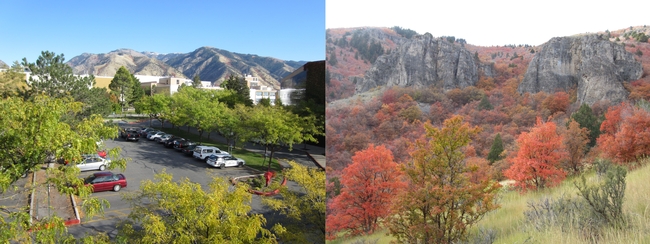Listening and Learning
Last week I was fortunate enough to attend two excellent meetings that focused on different aspects of forest products and biomass utilization. The first was the Restoring the West Conference held at the Utah State University Campus in Logan. The conference was sub-titled “sustaining forests, woodlands and communities through biomass use” and covered a wide range of topics ranging from forest and range management to marketing and biomass utilization technologies. The focus was very much on pinyon-juniper ecosystems found throughout the inland west including areas in California (such as east of the Sierra Nevada and the north eastern part of the state).

It is great to visit other geographic areas outside of California as it helps to put our situation and challenges with respect to forest ecosystem restoration and the utilization of woody biomass in context. California is lucky that it still has a forest products industry infrastructure. There are still 23 operational sawmills in the state along with 30 operational biomass power plants, and 7 other primary processing facilities (including veneer, panelboard and wood shavings). It is easy to forget how fortunate we are that some industry continues to exist in California and gives land managers options for material disposal that are simply not available in the interior west. We are also lucky that we deal with a variety of tree species that means that we have a choice of utilization options from sawmilling down to compost and electricity generation.
Presentations from the conference were recorded and I believe they will be available online soon.
On Friday I headed to Anderson for a workshop organized by the California Licensed Foresters Association on California’s Forest Products Markets. There was a significant focus on the export markets for logs which is having a major impact on west coast saw log prices. Prices for log export at west coast ports (including Samoa and Oakland) range from $500-$1100 per MBF. The major historical markets were Japan and Korea which allow export of logs with the bark on. In the past couple of years China has become the major player and requires the bark to be removed from the logs. There was an interesting discussion on the different business practices of the alternative markets. It appears that the Chinese market can be very volatile compared to Japan and Korea. It was interesting to hear descriptions of the Chinese sawmills where the logs go – they typically consist of two bandmills, lots of workers and no other mechanization. It was questioned how it is possible for them to make money based on Chinese lumber prices versus the prices paid in the US for logs and the transportation costs. The presenters were excellent and also covered topics such as the state and Federal log export bans, Forest Service Stewardship Contracting, distribution centers, transportation systems, specialty markets, electrical markets and carbon. It was a full day and very informative.
Links:
California Licensed Foresters Association
Restoring the West Conference